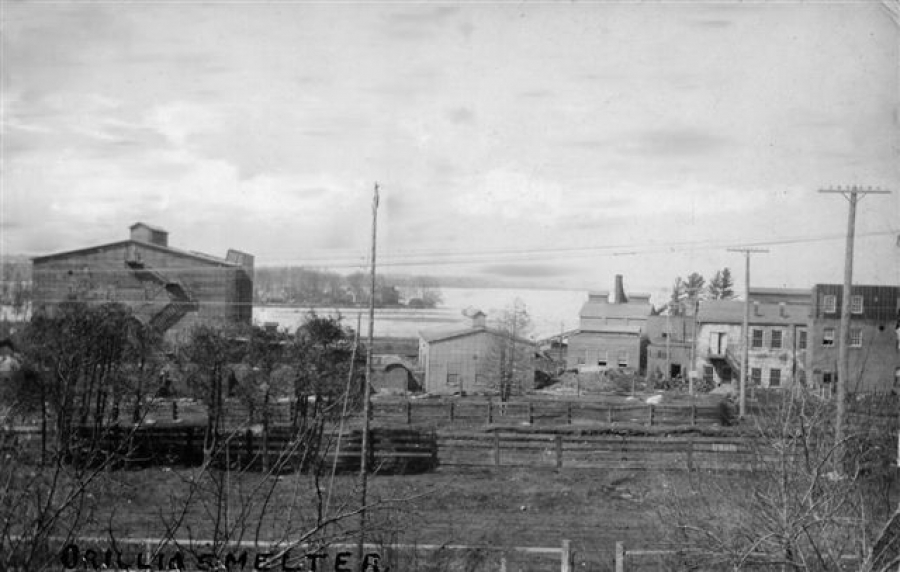This postcard was taken from Atherley Road near East Street, looking north, with Cedar Island in the background.
The Canadian Refining and Smelting Company stood near the present site of the small power station. The Orillia smelter had ore shipped by rail from Cobalt and from this ore the company produced silver, nickel and arsenic.
The ore was roasted in a blast furnace to produce the minerals. This gave off fumes, when cooled, that created arsenic dust which had to be filtered and collected in a large bag-house. During the operation, arsenic escaped into the neighbourhood despite improvements made to the filters in 1912.
The smelter opened in 1910 and operated for less than three years, until fire closed it down in the winter of 1912/1913. On July 10, 1913, a petition to prevent the smelter from reopening after the fire was presented to town council. It was signed by over 40 residents living in the area, including Stephen Leacock. The petition stated that the noxious fumes had destroyed a number of trees and shrubs beyond the company's property, and vegetation had been poisoned to such an extent that several animals had died.
Despite the petition, the smelter made plans to reopen in December 1913. On July 16, 1914, a judgment was awarded to a Mr. Cairns who owned land on Moffat St. within 1200 feet of the company. He presented evidence that clouds of arsenic would bypass the smelter's filtration system and settle on his property, affecting his and his wife's health.
Mr. Cairns received nothing for his family's ill health; however the judgment awarded him $80.00 for the loss of a poisoned cow. Fortunately, before any long-term damage occurred, and Orillia became a barren landscape, the smelter closed for good in August 1914.

